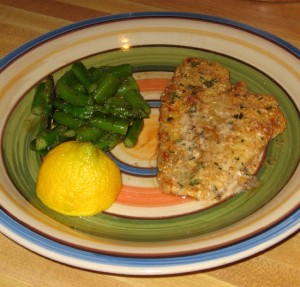 I’ll state at the outset that I’m not a fish lover nor am I’m much of a seafood lover in general. Apart from shrimp and a can of tuna now and then, I get along quite well without the stuff. However, I know intuitively, and I’m constantly reminded from various sources, that fish is not only a healthy source of protein, but certain cold water types such as salmon, cod, and mackerel are great sources for the much vaunted omega-3 fatty acid.
I’ll state at the outset that I’m not a fish lover nor am I’m much of a seafood lover in general. Apart from shrimp and a can of tuna now and then, I get along quite well without the stuff. However, I know intuitively, and I’m constantly reminded from various sources, that fish is not only a healthy source of protein, but certain cold water types such as salmon, cod, and mackerel are great sources for the much vaunted omega-3 fatty acid.
Of those three varieties of cold water fish, I’m willing to make an exception for salmon, but only if it’s thoroughly spiced and/or drenched in some kind of sauce. Can’t have any of that fishy taste getting through! Below is a hilarious discussion by Jim Gaffigan with David Letterman on how much he hates fish and seafood in general. Warning: if you love clams and oysters, you probably should watch with caution!
But the main reason I attempt to work fish into my diet is to add some variety beyond just eating chicken and ground beef for dinner every night. There are only so many bunless burgers and variations of baked chicken someone eating low-carb can manage – both gastronomically as well as emotionally.
Without too much of a stretch, I think it’s safe to say that the most popular preparation method for fish, in terms of taste and texture, is to bread and fry it.
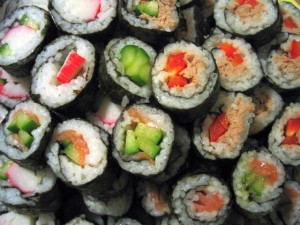
Sushi, a dark place I don’t go.
A close second would be sushi, but sushi restaurants aren’t typically on my culinary itinerary. There are breaded and fried fish fillets of all kinds and in fact, there is an entire group of fish that are termed “pan fish” after this particular cooking method. Sunfish, bluegills, and perch are all pan fish. Catfish and any other white fish including, the ever-present tilapia (trash fish), can be breaded and fried up in a pan of hot grease. However, my preferred variety of fish to fry these days is flounder.
The suggested (healthy) cooking methods for all sorts of food, going back several decades, have been to eschew frying for: baking, poaching, grilling, and any other method, including raw consumption, to reduce the fat content of the dish. As we’ve come to find out over time, this across the board fear of fat has been unwarranted. Now that’s not to say that heavily-battered, deep-fried, low-quality such as fish and chips is in any way close to a healthy meal. However, I won’t deny that it is indeed a delicious indulgence and is wonderfully complemented by a pint or two.
The challenge I’ve been faced with is to prepare a fried flounder fillet using a low-carb or at the very least, lower-carb breading, and then fry it in healthy fats. The frying part was quickly and easily solved. The breading part is one that continues to challenge/vex low-carb cooks the world over and though there is certainly no shortage of ingredients that can be substituted for refined white flour, cornstarch, and breadcrumbs, most come up short in the texture and taste department and usually both. Below are just a few off the top of my head:
- Almond flour
- Coconut flour
- Crushed pork rinds
- Parmesan cheese
- Ground cauliflower ( I think)
I haven’t managed to work my way through the relatively short list above, but have tried almond flour, pork rinds, and Parmesan cheese, singly and in combination. As far as pork rinds, I suppose I’m too much of a food snob to take them seriously and it was a long time before out of desperation for flour-based breading substitute that I relented and gave them a try. Yuck! No offense to pork rind lovers, and I know there a many out there, but they don’t work for me.
I’ve found Parmesan cheese to be a very effective coating for chicken, but only when baked. I’ve combined it with almond flour with very disappointing results. I’m curious about coconut flour as it’s something I’ve never tried, but at the point more interested in using it for baking. Cauliflower is something I’ve only recently acquired a taste for, but prefer it as nature intended it to be consumed: as a vegetable side dish, though the riced cauliflower as a substitute for white rice in stirfrys and even the pizza crust made from cauliflower look interesting, though much more work than smearing sauce on a low-carb tortilla.

Just say no to flakes!
To date, the most acceptable substitute for white flour that I’ve found is almond flour, but let’s not kid ourselves, it’s nothing more that ground up almond nuts without a trace of gluten to be found. Not containing gluten along with having much lower starch content would ordinarily be a good thing – at least from a nutritional standpoint if you’re eating low-carb or are gluten-sensitive. However, it doesn’t lend itself well to either baking or using it for breading.
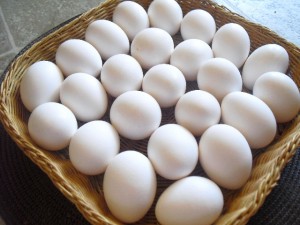
Just say no to wasting a precious egg!
The stickiness of gluten makes for better behavior in both cases. I’ve found that mixing almond flour with some other non-flour ingredient such as cheese or other nut flour doesn’t work too well as a meat or fish breading even when using an egg dip. An egg dip makes breading such as bread crumbs or cornflakes adhere better, but isn’t necessary when using flours. It makes for a sticky mess and is also a waste of a completely good egg!
I found that almond flour on its own or in combination does not adhere very well to what it’s supposed to be coating. It would crisp up nicely in the frying pan only to flake off and burn up in the hot oil. The purpose of a breading is to seal in the natural juices of the meat or fish and provide a crispy outer shell. Think Southern fried chicken… or perhaps you shouldn’t.
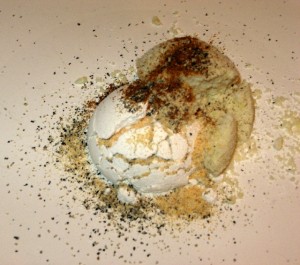
Not abstract art.
Again, I’ve been forced to settle for another “Nutritional Compromise” and use a scant amount of refined white flour to leverage the cooking benefits it provides while subjecting myself to some of its not so nice nutritional qualities. In the end, the relatively small amount of white flour used – less than 1 Tbsp – hasn’t seemed to have had a negative impact on either my weight, digestive system, or level of carb cravings.
Of course, I’m well aware that this particular compromise is unworkable for those with a sensitivity to gluten as any amount usually causes issues and it may be problematic for those eating a strict ketogenic diet, though I’m willing to bet that even those folks could probably tolerate it and not find themselves thrown out of ketosis. The very minimal amount of white flour shouldn’t cause problems. If you can tolerate low-carb items containing wheat, such as tortillas, then this is in the same category.
Fried Flounder Recipe
By way of example, here’s a recipe for fried flounder that uses the tweaked breading ingredients. I’ve come to enjoy this recipe so much that I now have it once a week for dinner to break up the monotony of chicken and hamburger. I use a preparation step to reduce the fish taste of the founder. How and if this technique actually works I have no idea. It’s an old school trick and seems to work for me – at least psychologically. As a final “de-fishification” step, I squeeze fresh lemon juice over the fillet. I need all the help I can get in order to eat fish!
Nutritional Information:

Breading Nutrition Label

Fried Flounder Nutrition Label
Ingredients:
- 1 medium flounder fillet
- 1 Tbsp butter
- 1 Tbsp extra virgin olive oil
- 1/2 small lemon
- dried parsley flakes
For the Breading:
- 1/4c milk
- 1 Tbsp white flour
- 1 Tbsp almond flour
- dash ground black pepper
- dash garlic powder
- dash paprika
Directions:
- Soak fish in a small bowl of milk for at least 15 minutes.

- Thoroughly mix breading ingredients on a plate.
- Heat non-stick skillet and add butter and EVOO.

- Carefully remove fish from milk and gently squeeze out excess milk. Don’t want fish too moist.
- Dredge both sides of fillet through breading mixture. Use a metal soup spoon to distribute mixture on fillet.
- Fry fillet in oil until crispy brown on both sides – about 4 minutes per side.
- Sprinkle ground black pepper and dried parsley flakes on fillet and let cook a few more seconds.

- Remove fillet from pan onto serving dish. Squeeze juice from lemon over fillet.
Photo Credits (morguefile.com):
- Sushi: priyanphoenix
- Flakes: dhester
- Eggs: Scarletina
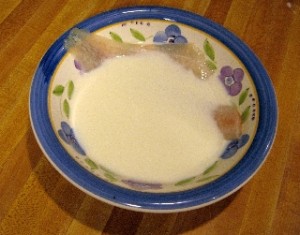
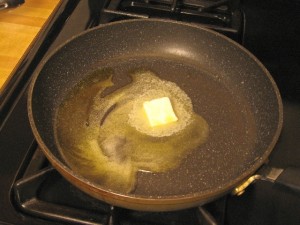
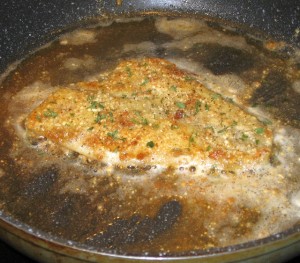
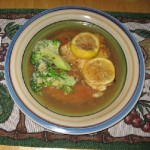
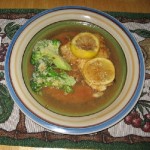

Leave a Reply